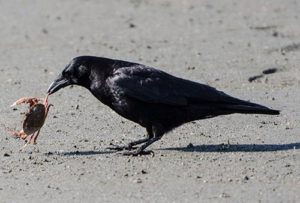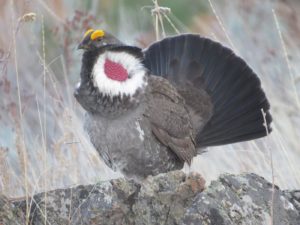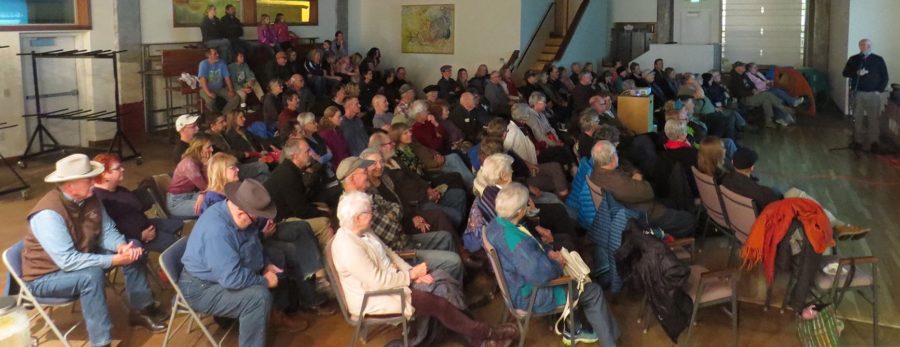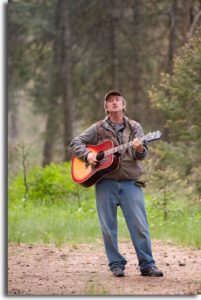Birding in the Highlands
On Saturday, June 17th, 2017, OHA teamed up with the Okanogan Land Trust (OLT) to offer an educational birding field trip in the Okanogan Highlands.
On Saturday, June 17th, 2017, OHA teamed up with the Okanogan Land Trust (OLT) to offer an educational birding field trip in the Okanogan Highlands.
On Friday, January 6th, 2017, award-winning photographer Paul Bannick returned to Highland Wonders with a presentation based on his new book, Owl: A Year in the Lives of North American Owls. In Owl, Paul uses his intimate yet dramatic images to follow North American owls through the course of one year and in their distinct habitats.

Crows are mischievous, playful, social, and passionate. They have brains that are huge for their body size and exhibit an avian kind of eloquence. They mate for life and associate with relatives and neighbors for years. And because they often live near people, they are also keenly aware of our peculiarities, quickly learning to recognize and approach those who care for them, even giving numerous, oddly touching gifts in return. The characteristics of crows that allow this symbiotic relationship are language, delinquency, frolic, passion, wrath, risk-taking, and awareness—seven traits that humans find strangely familiar.

The Highland Wonders educational series kicked off 2016 with an opportunity to learn about the world of grouse breeding behavior, with an inside perspective on grouse mating systems Dr. Michael Schroeder. Mike has a Ph.D. in wildlife biology and is the upland bird research scientist for the Washington Department of Fish and Wildlife.

Renowned biologist, birder, and author Dick Cannings brought his vast knowledge of birds to Highland Wonders on Friday, February 6, 2015. In his inspiring presentation, “The World Needs More Birders,” Cannings demonstrated how going out to enjoy and watch birds can also generate valuable information about the abundance and distribution of bird species in our region. Drawing on a long career as a professional biologist, Cannings conveyed anecdotes, stories, and experiences that underscore the need for citizen science programs. Through coordinated efforts, the public can be actively involved in turning bird watching into a collective database of bird breeding, bird behavior, and migration.
Not only are Great Gray Owls the largest owl in North America with the largest wingspan, their stature and countenance spark a sense of wonder. With alternate names such as “Great Grey Ghost” and “Phantom of the North,” they inspire awe and pique our curiosity. From unique adaptations for locating prey, to behaviors for defending their nests, to strategies for successful breeding, these masters of silent flight capture our interest.

On February 7th, 2014, wildlife biologist Ken Bevis, who is also a singer/songwriter, provided an entertaining evening of stories, photos, songs and science, aiming for a closer understanding of some of Washington’s fish and wildlife… sometimes from the viewpoint of the critters themselves! This family-friendly program was fun for all ages! Species featured in the “Saga of Washington’s Fish and Wildlife” presentation included: sandhill crane, bull trout, chinook salmon, hummingbirds, black bear, and more…
On Friday, May 3rd, 2013, Martha Jordan came to Highland Wonders to share information about the Trumpeter Swans who grace the waters of the Okanogan at various points in the year.
On Friday, Feb 1st, 2013, Dr. Michael Schroeder brought his wealth of experience with, “Grouse of the Okanogan.” We learned that Okanogan County is home to seven species of grouse, more than any other county in the US. Okanogan County is home to: Sage Grouse, White-Tailed Ptarmigan, Sharp-Tailed Grouse, Spruce Grouse, Ruffed Grouse, Dusky Grouse, and Sooty Grouse. There are 12 species in total across the United States.
On Friday, January 4th, 2013, Dr. Scott Ford, avian medicine and surgery specialist, shared information about local loons. Their biology and conservation were discussed, along with stunning images taken by Dan Poleschook and Ginger Gumm, local professional photographers. Dr. Ford discussed where our loons go in the winter, and provided updates on telemetry technology that will allow researchers to better track individual loons from our area in the coming years.
